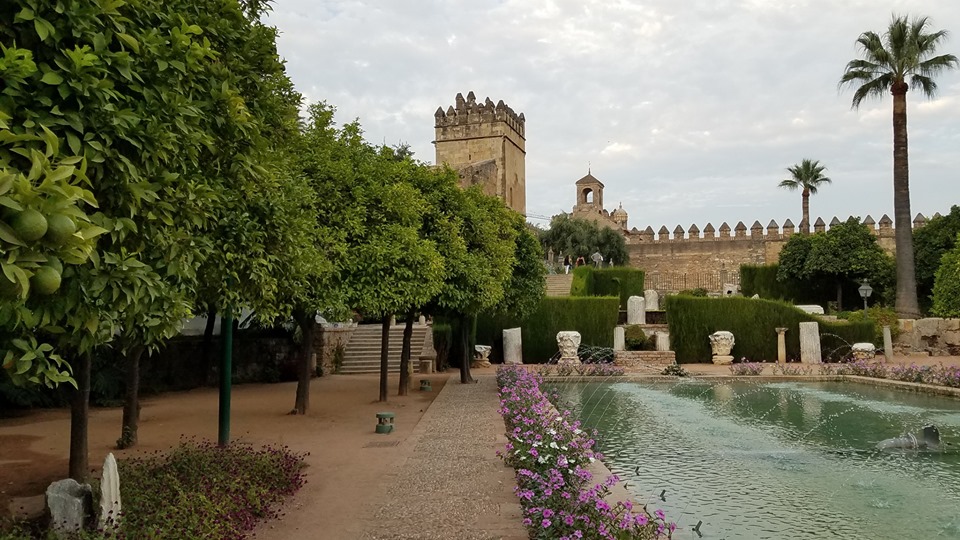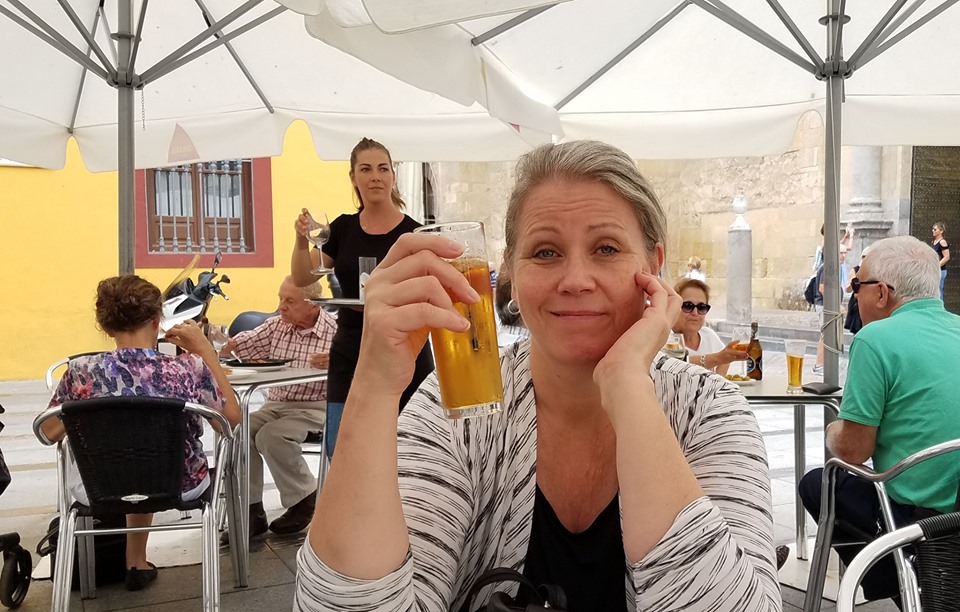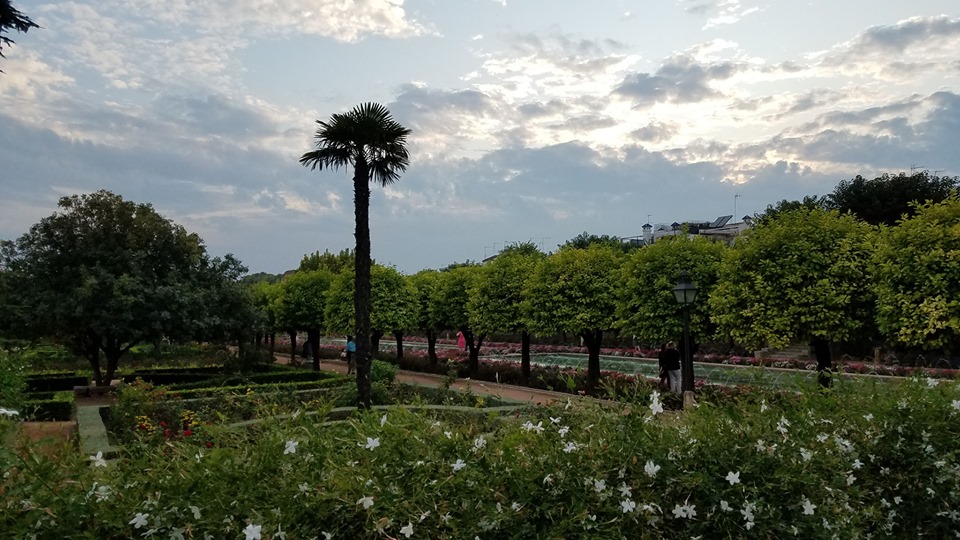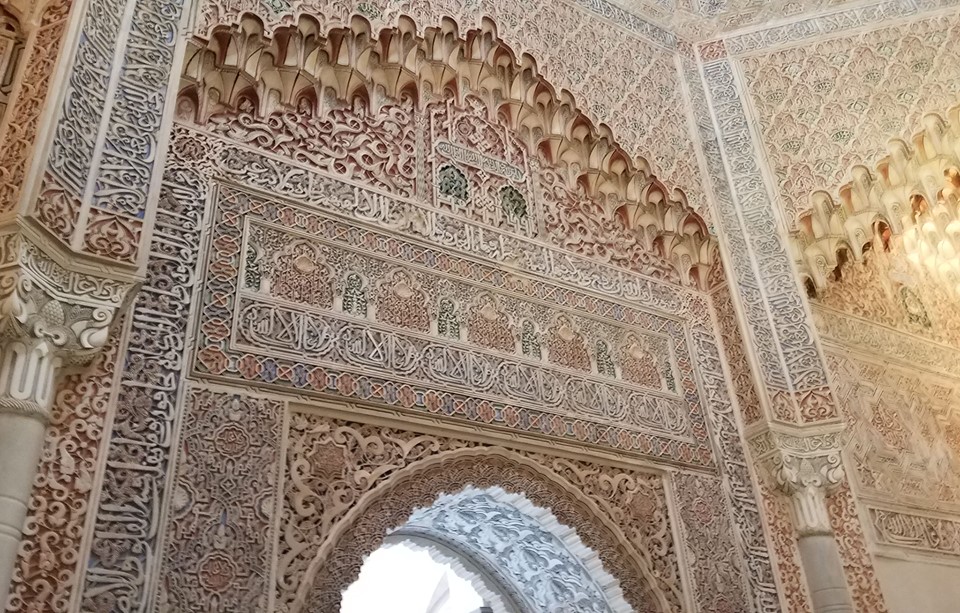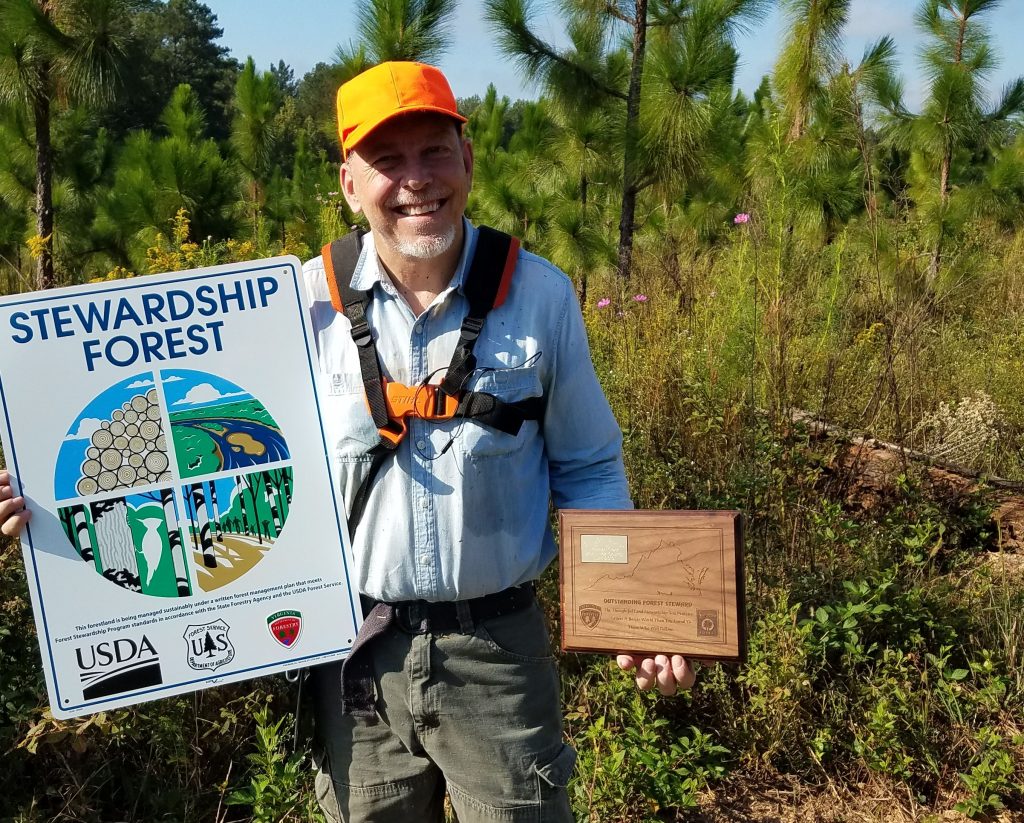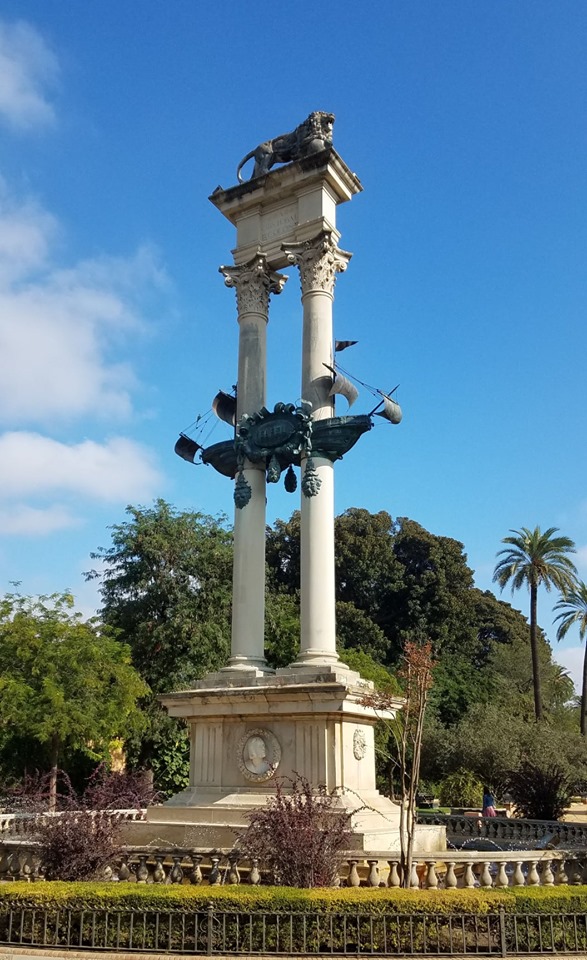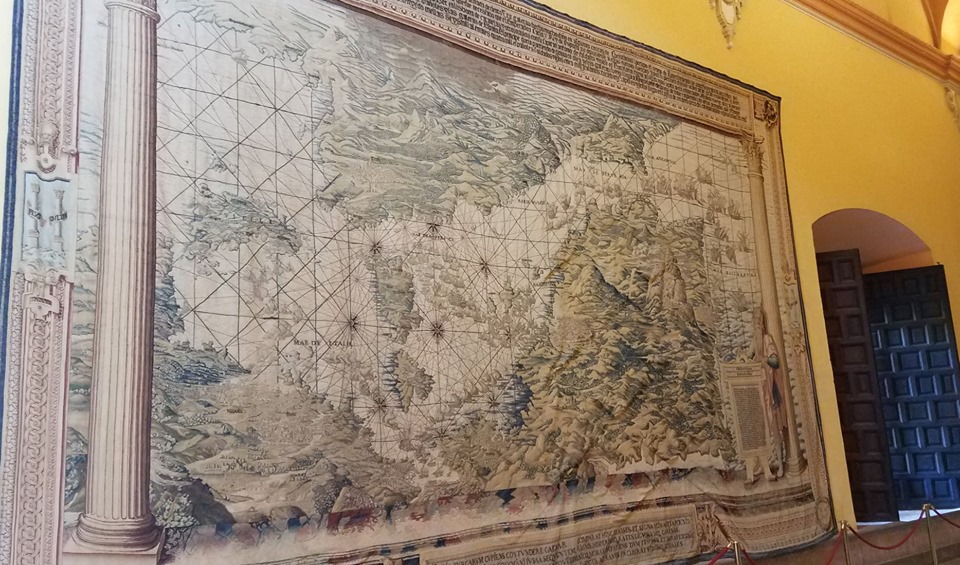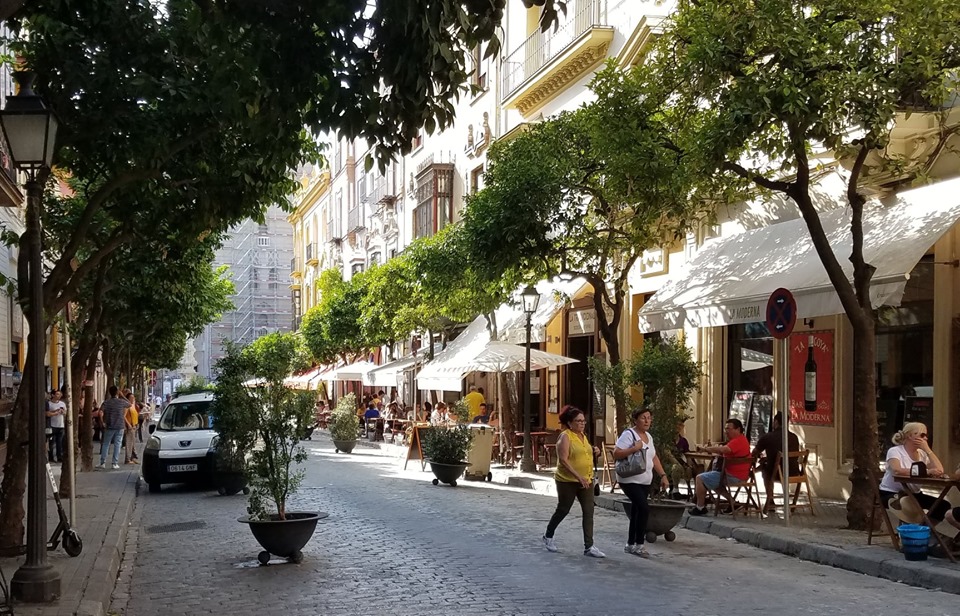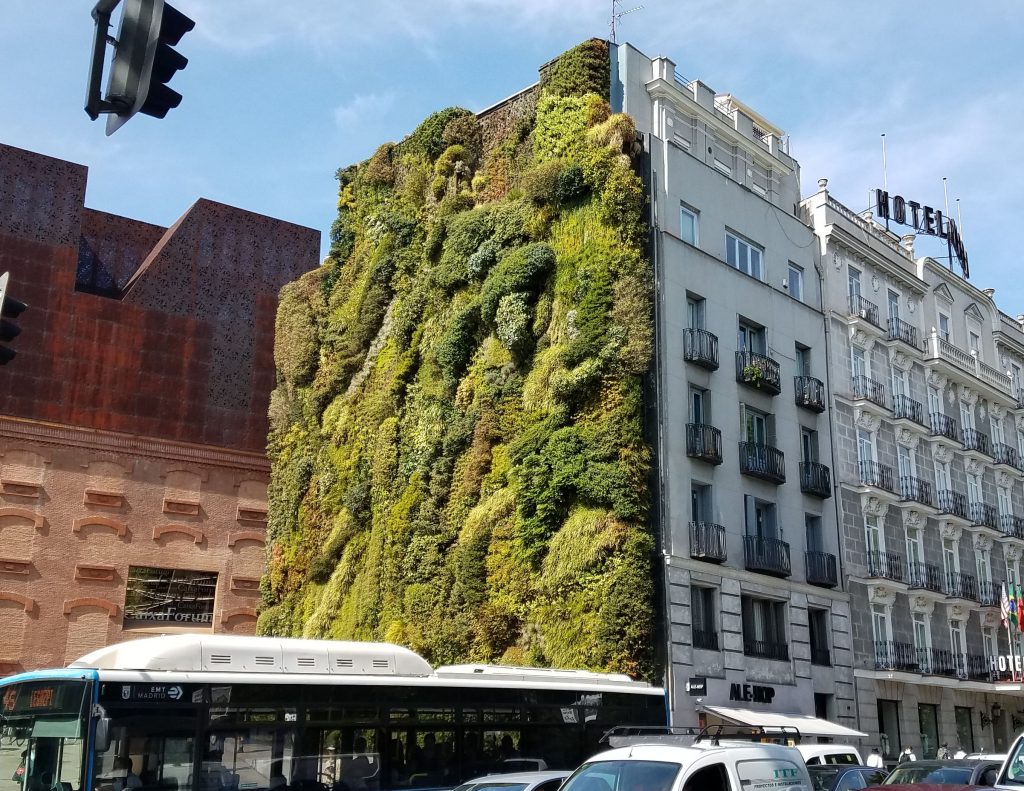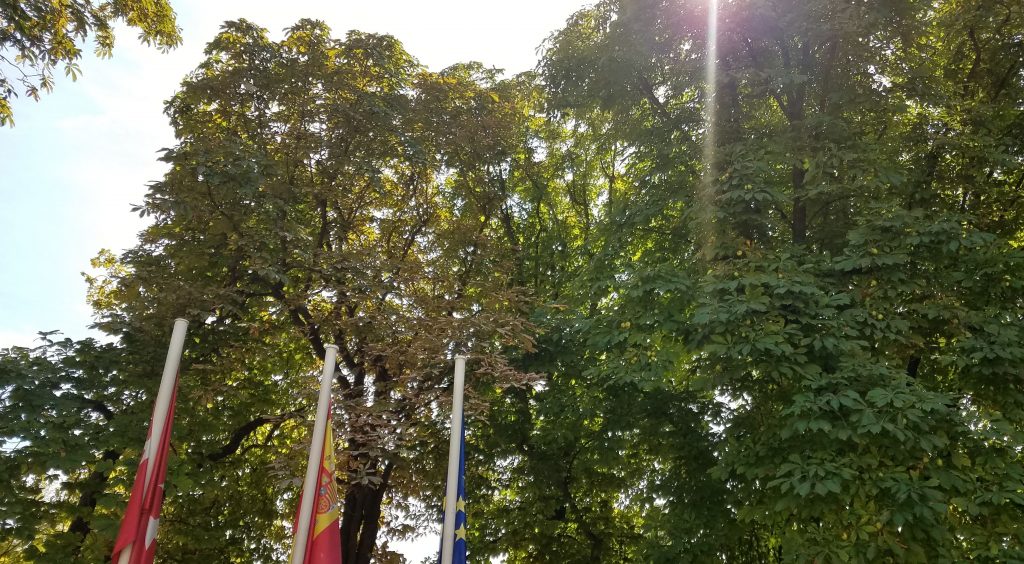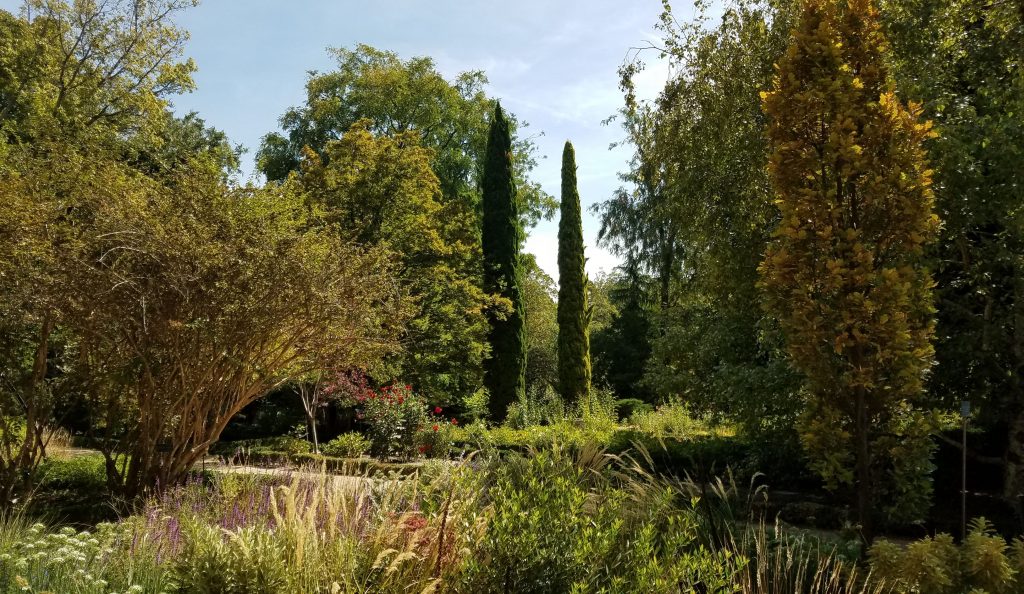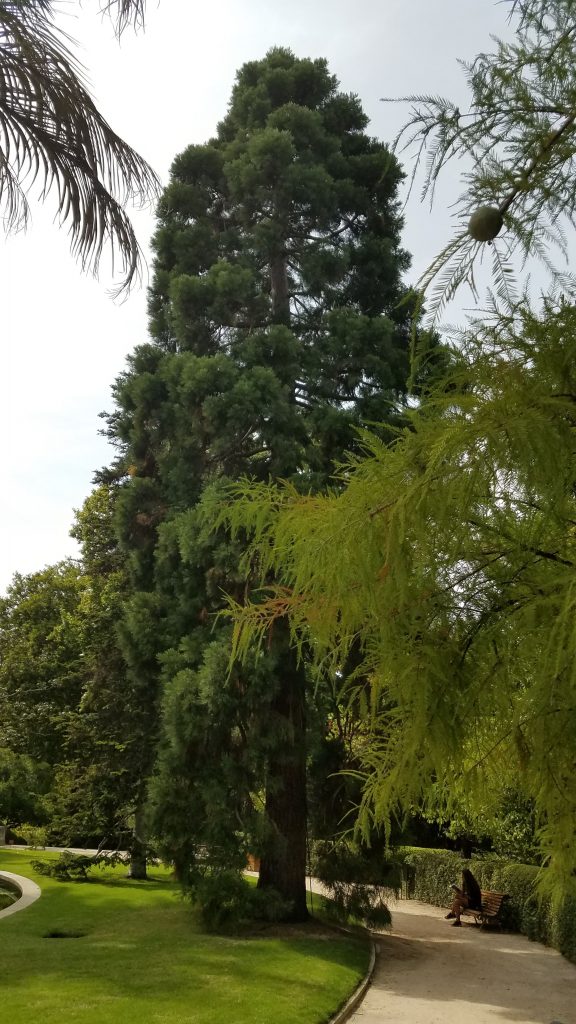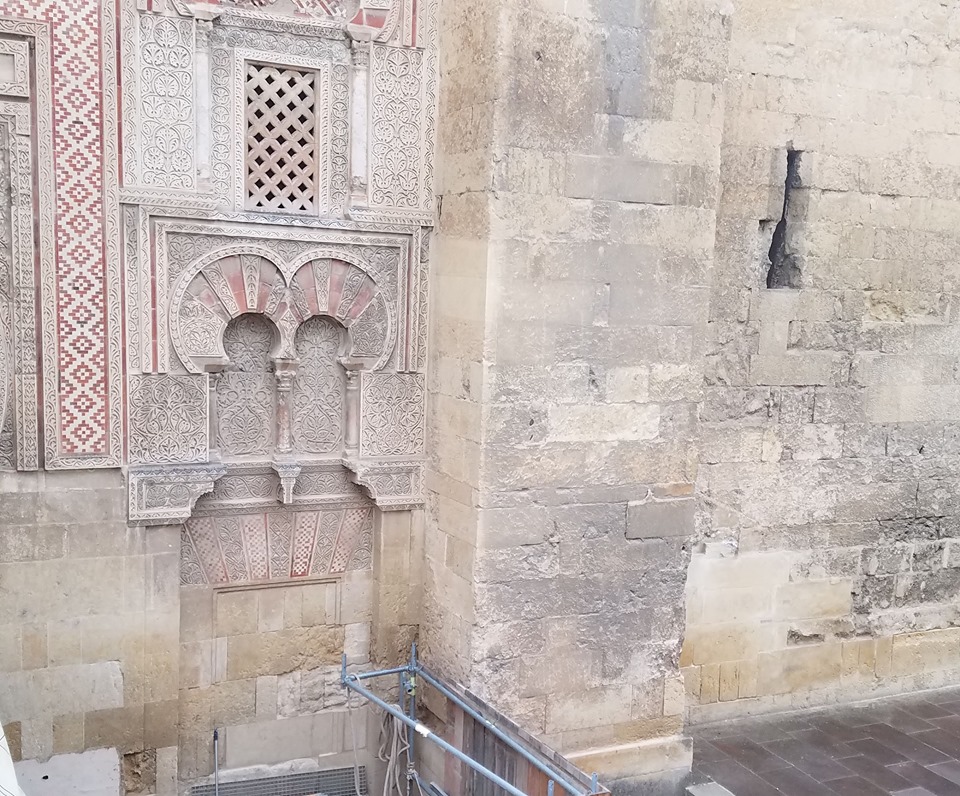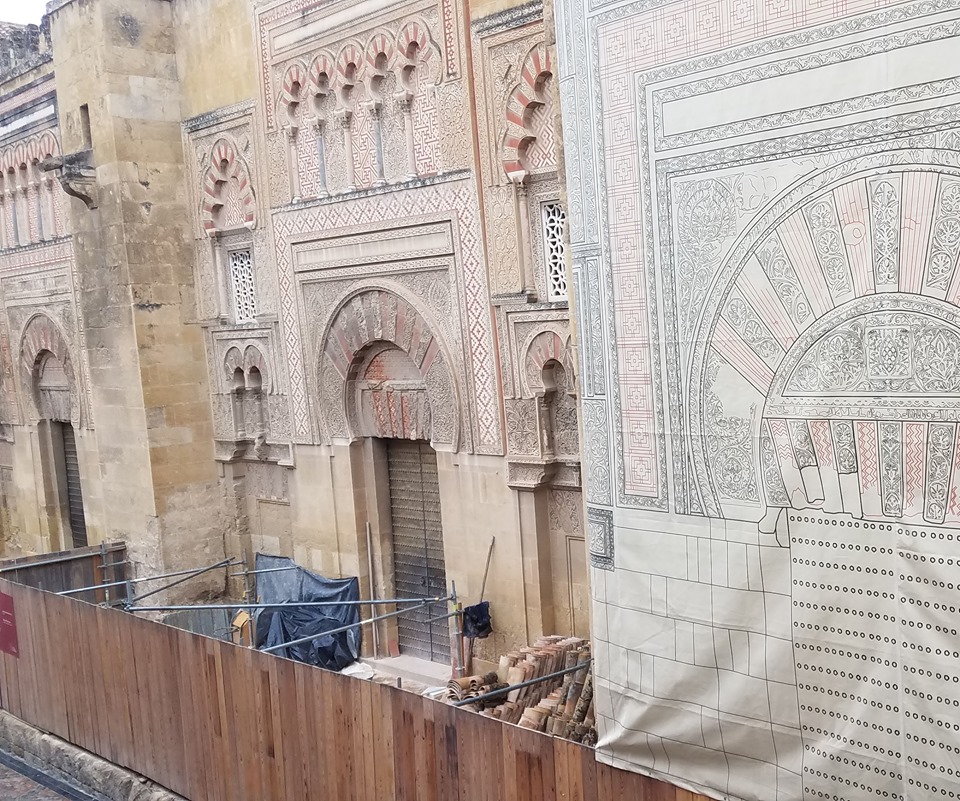I sense a subtle but important change of emphasis in the ICC reports on climate change that I think was evident in this “Deep Dive: IPCC Special Report on the Ocean and Cryosphere in a Changing Climate” I attended today. There was plenty of gloom about the projections of the future, and there is plenty to be gloomy about. The earth is warming at a rate unprecedented in human history. Oceans are rising both from thermal expansion of the water and lately from the melting of terrestrial glaciers (melting of sea ice does not raise sea levels) and there is danger that the Antarctic ice sheets could join in, something not previously anticipated in this century. The change in emphasis that I perceived is a more practical approach. There is more emphasis on trying to figure out what we can do, both to mitigate and adapt, and less of ultimately fruitless search for blame in the past.
An iterative process is making the science better
An important factor, IMO, is that projections are becoming more precise. Science is an iterative process and with each iteration we get better, never finding final truth but getting closer to usable ones.
Introductions
Introducing the day’s program was Ambassador David Balton, Senior Fellow, Wilson Center and Pete Ogden, Vice President for Energy, Climate, and the Environment, United Nations Foundation. They laid out some of the facts I mentioned above and talked about the value of the new report. This is the first one to emphasis oceans and the cryosphere. These two were put into the same category more as an expedient than a plan, but their pairing was fortunate, since they are intimately connected. Water flows between them. Ogden talked about the usefulness of IPCC reports. The scientists do not make policy, but they inform it.
How the IPCC report function works
Ko Barrett, Vice Chair of the IPCC, talked about how the IPCC reports are produced. This one involved 104 authors combining 6981 studies and encompassing 31,176 comments. The report documents the thawing of glaciers and permafrost. Barrett explained that changes are coming too fast of natural systems to adapt. Humans can help, and we will need to adapt, but we need to mitigate change to slow it down enough that we can adapt. The oceans have been absorbing much of the heat of climate change, but marine ecosystems have been harmed (consider bleaching of coral) and there is a question about how long this can continue. Things often do not develop uniformly. Rather, natural systems feature punctuated equilibriums with tipping points of significant change. This is a risk.
Timely, ambitious and coordinated action are called for. In high mountains melting is evident. Smaller glaciers are shrinking, and some are disappearing. Glaciers and snow cover are reservoirs. Even if we limit greenhouse gas today, ¼ permafrost will be lost. This is already affecting arctic populations. Many low-lying islands will be under water.
She mentioned something I had not thought about – oceanic heat waves. Of course, it makes sense. Oceans have weather just like the land does. And the extremes are the issue, not the average.
The quicker and better we act, the better we will be able to address the issue
Next up was a panel discussion moderated by Monica Medina, Founder and Publisher, Our Daily Planet. First to present was Mark Eakin, IPCC Contributing Author. He talked about oceanic heat waves that cause coral bleaching. There have been three big bleaching events in recent years: 1998, 2010 and a long one 2014-17. The distressing fact is that this is still going on. Once coral ecosystems are dead, they take a long time to come back, even if the heat is abated. We are currently looking at big bleaching events around Hawaii and the Caribbean.
Robert DeConto, University of Massachusetts, Amherst; IPCC Lead Author, talked about his part of the report showing a set of charts, showing projections based on a low possibility, a blue curve with aggressive curbing of emissions, and a higher one, a red curve if current trends continue. We – and the world – probably can adapt to the blue line, red maybe not.
Sea level rises – thermal expansion and melting of terrestrial glaciers
There has been a change in why sea levels are rising. In the past, it was thermal expansion. Now it is more land-based melting. Greenland is melting from the top down. As it melts, it gets darker and absorbs more heat. There is more than 7 meters of sea level rise worth of ice in Greenland. An even bigger problem would be Antarctica. The danger here is sea level rise and the sea getting under the ice. Much of Antarctica is below sea level. It has been in the deep freeze, so it did not matter, but if water gets below the ice, it will be a bigger deal.
Adaptations requires mitigation, not a choice between them
Michael Oppenheimer, Princeton University; IPCC Coordinating Lead Author, picked up with what can we humans do about the problem. The big thing is to reduce emissions so that we are closer to the blue line. We might have a chance to catch up with this, to adapt.
Adaptation will include retreating from the coasts and allowing for natural buffers. There have been buyouts after hurricanes. Those who do not want to move away might build higher off the ground. We can also build protections, like sea walls. We can even advance into the sea, as they have in Netherlands. But a precondition for any adaptation is to mitigate.
Mr. Oppenheimer was very critical of subsidized flood insurance. This encourages building where it otherwise makes no sense. This is exacerbated by incentives that do not include preparations. The Federal government will help after a disaster, but fixing the system gets politicians no credit. People forget the last disaster and they don’t appreciate the disaster avoided.
During the question period, Mr. Oppenheimer talked about adaptation. Some of our coastal problems are exacerbated by climate change, but climate change is not the primary driver. Conservation of coastal areas in ecosystems like salt marshes and mangroves could be very helpful. These systems are themselves adaptive. It is an ecosystem-based defense. But we tend to destroy these things as much as protect them.
Developments in the high arctic
There was supposed to be a second panel, but evidently the only one to show up was Ambassador Kåre R. Aas, Ambassador to the United States, Norway, so Moderator: Sherri Goodman, Senior Fellow, Wilson Center, interviewed him. Ambassador Aas gave practical advice. We cannot solve all the problems at the same time, and so need first to address the worst or the ones that pay off the most. Fix the problem not the blame. Norway is working toward a no net carbon future, but in the meantime is a big producer of oil and gas. The Ambassador emphasized that using gas is better than coal, even if the long-term goal is to use neither.
The thawing arctic is opening up new opportunities and challenges. Shipping is become easier in the region. The Arctic Ocean is a kind of frozen Mediterranean Sea. If it thaws, ships can move. Resources are also an issue if the deep freeze thaws. The Norwegians are watching with some alarm the Russians on the Kola Peninsula. This is an old concern, made more current by climate change. But the Ambassador has observed that many people feel more threatened by the Chinese than by the Russians. China is no where near an arctic power, but they have strong interests in the region’s resources.
Ambassador Balton and Rafe Pomerance, Chair, Arctic 21, closed the program. Mr. Pomerance emphasized the need to get lots of people onboard, to build consensus. These are big issues that affect everybody. Solutions imposed, even if they are objectively sublime, will not be as effective as those brought about by consensus.
All things considered, an interesting discussion, encouraging despite the gloom of many of the facts. We have to continue our striving.
You can download the report at this link.
The Meritocracy Trap
I have been a true believer and beneficiary of meritocracy, and I am hesitant to question it, but I am increasingly questioning what meritocracy has become and the outcomes it has created. It is not just me. In his new book, “The Meritocracy Trap,” Daniel Markovits, a professor at Yale Law School, lays out the case that meritocracy, as positive as it has been, has now created and perpetuates a privileged class, as entrenched at the old aristocracy it displaced, and perhaps more pernicious precisely because it is based ostensibly on merit. It is a tall order to face down merit, which is a core American value, but very much depends on what we mean by the term. We rarely stop to think about that, time we did.
A new order
First a story of the passing of the old order. It is a story I have told before. When I was a young officer, I had frequent social contact with a woman who really disliked me. I finally asked her why and she explained that her family had been in America since before the Revolution. For more than 200 years, her family had contributed thinkers, leaders and diplomats. In her generation, however, her brother was denied the opportunity. He wanted to go into the Foreign Service but could not pass the test. He was qualified in every way she knew. He has the right breeding, manners and a superb education, but that test kept him out. Meanwhile, upstarts like me, none of whose ancestors had been nearly as eminent as hers or his, we got the jobs. This is a personal example of the conflict of the old and the new order. Most of us can think of something like this, and most of the time we think it is good. Merit rewards effort and competence and most people applaud this.
The difference between a life-giving medicine and a deadly poison often depends on the dosage
The middle of the 20th Century was the almost golden age of meritocracy. Previously excluded individuals got ahead and the whole country was moving ahead. Colleges were full of first-generation students. Veterans using the GI-Bill went to college almost for free. It was not hard to get into college. People got lots of chances and they could earn their expertise, their places in the growing economy. Nothing is ever perfect, and this was also only an almost golden age, most of the economy and schools, however, were open to general merit.
But as the Greek historian Polybius said more than 2000 years ago and others have repeated since, every system contains within it the seeds of its own destruction. As people got positions because of merit, they started to want to perpetuate their status. The judgment of merit became more formalized and less practical, while those already established learned to game the system for themselves and their children.
The meritocratic system was open to all, but some were in much better positions to play the game
Let me share again some personal experience. I was on my HS swim team. I held the Bay View school record for the 400 freestyle and the joint record for the 400 relays. I was a champion swimmer in the context of my high school and the city of Milwaukee. However, I was at best mediocre compared to kids in the rich suburbs. They were not naturally bigger or stronger, nor did they work harder, but they had been training competitively since they were little kids; city kids like me started when we got to HS. They did not have to cheat to win. They were clearly and consistently faster because of their superior preparation. A swim race is not something open to interpretation. Judged strictly by their merit, they merited better. Was it fair for them to win all the time? Was it fair to set up a system where the better performers didn’t?
Who works the most?
In the past and still in TV and movies the poor work while the rich play. This stopped being true a few decades ago. Today the poor have a lot more leisure time, while the rich have enslaved themselves to work. When they used to talk about bankers’ hours, it meant working only a few hours a day, not even 9-5, i.e. 9am to 5pm. Today hours for top bankers still 9-5, but the joke is 9am to 5am. One reason it is hard to compete with the elites is that it is hard to match their ferocious work habits. And these habits start young.
In the swimming world guys like me can never catch up. It would be possible in theory for us to get training to catch up, but by the time we did our bodies would be too old. This is not necessarily true in most other aspect of life. Someone could well learn form experience and/or take remedial training. This is what used to happen often in the recent past but is increasingly precluded by the formal meritocracy and this is indeed the unfair aspect.
Credentials up the wazoo
It has to do with credentials. Credentials are a proxy for merit and the contest for them starts when participants are very young. They get the right credentials to get into the right schools which give them the better credentials to get the better jobs … In this respect, I was reminded of a book I finished a couple months ago called “Late Bloomers: The Power of Patience in a World Obsessed with Early Achievement.” The author of this book advocates the opposite, but laments that the world is often moving the other way.
Bigotry acceptable and not
Markovits makes some observations about the meritocracy in practice, and he ought to know given his position deep inside. He says that the meritocracy is not prejudiced on the basis of race, gender or ethnicity. In fact, meritocrats celebrate this sort of diversity are puritanical about sanctioning any transgressions in thought, word or deed. The easiest and really the only way to get chucked out of the elite is show or even imply bigotry in any of these areas. However, there is a strong prejudice against those seen less deserving, the perceived losers in the meritocratic game. This group often includes Southerners, working class folks, residents of rural areas and generally what the elite refer to as “fly over country.” Markovits attributes much of the anger against elites to this.
Who does meritocracy oppress?
So, who does meritocracy oppress? Everybody. The winners have to work all the time and never feel secure. The losers … well they lose. But the system hangs on and gets stronger because nobody can come up with viable alternatives. Anything except merit seems immoral and measurements become more and more precise. So what can we do?
Markovits suggests that we start with elite schools and induce them to let more students in and to recruit more of them from the less elite parts of the population, maybe even “fly over country.” This sounds a lot like affirmative action, but it would broaden beyond the usual race and gender groups. But the key is not only to change the composition of the student body, but also to expand the total numbers. There is no good reason for the top institutions to be exclusive. The “best” universities could double or triple their intake w/o a diminution in quality.
It is a myth that the selection process works so well. In fact, the results reflect more precision than the underlying data justify.
When I was State Dept Fellow at Fletcher School of Law & Diplomacy I was asked once and only once for my opinion on admissions. They told me that there were maybe five times as many qualified applicants as there were places. I asked what they meant by qualified. I am qualified to play quarterback for the Green Bay Packers, if qualifications are so basic as to include the ability to run across the field and toss the ball. I was assured all these potential students were highly qualified and would thrive in the program. I suggested a lottery. Numbers are unbiased, and if we recognized the basic uncertainty and randomness, we can use it. They were unenthusiastic about my proposal and never invited me back. I still think it is good, however. It would be simpler, make the kids less crazy and weaken the hierarchy.
Schemes to lessen inequality are often ineffective because they chop at the branches w/o getting at the roots. Markovits does suggest a sort of income redistribution by raising the limit on Social Security, making it less regressive. But the more effective course would be to address the systemic problem. And the systemic issue is that high performing individuals have aced out the medium ones. This is not always to the good. We all know of great individual performers who do the work of five people but essentially destroy the work of ten. If we are beguiled by the great performance, we miss the loss to the total system. We really do not need more great performers. What we need is more competent others.
It all depends
Markovits makes a good point about the rules of the game. Whether or not a performance is good depends on circumstances. He gives the example of a great pitcher in major league baseball. His skills are dependent on rules of the game. Change the height of the mound, size of the ball or any of myriad other things and the skill set changes. The pitcher’s skills may not be appropriate to other aspects of life, other sports or even other aspects of baseball. The highest paid people today often work in finance. Finance has become much more competitive, but has it really become better? Could it not be handled by lots of less ferociously competitive people rather than the fewer high-flying ones?
Markovits does not use the example, but I have heard the analogy of one set of doctors injecting people with diseases that the other set can cure. Both groups might hone their skills to wonderful art and science, get better with each turn of the screw, and still produce nothing useful.
This book sure is worth the effort. The issue is topical and the author handles it extremely well.

amazon.com The Meritocracy Trap: How America’s Foundational Myth Feeds Inequality, Dismantles the Middle Class, and Devours…1
Paradise gardens
Gardens are more than just places of beauty. They can and should also be place of contemplation of nature, meaning in life and of our relationship with God. This is a tall order, but it was evidently what the creators of the water gardens in Cordoba had in mind when they designed and built the gardens in these pictures.
Water and gardens has a special place in the ideology of Muslim Spain. The garden is associated with paradise, as in Christian ideas, but Muslims tend to add in more about water, probably because believers were often from arid places where water is more clearly something that need to be actively included. In places like Virginia, we give our gardens water, but can rely on rain for much of the sustenance. In arid places, if you do not bring the water, not water will be there, at least not enough.
Providing enough water for these Cordoba gardens was a significant engineering feat in itself.
The sound of running water is a big part of the enjoyment. You cannot hear that in the pictures, so imagine it. We got there near the end of day. This was good because there were fewer people, but the woman at the ticket desk warned us that we had only a little more than a half hour to enjoy the gardens. It would have been nicer to stay a long time, but we saw the whole thing in that time. Funny, I was joking about what to they do to get you to leave. Well, they make an announcement and then turn off the water.
My pictures show the Cordoba royal gardens. I have included one of Chrissy’s beer pictures from the day, another way to contemplate the meaning of life. I noticed along the garden lots of the plants they call Maria sem vergonia in Brazil. Vera Do Val Galante told me what those were. They grew profusely in Brasilia.
Inspiration
Travel can be inspirational. Just putting yourself in new surroundings is a start and if you can be in a place that makes you think in time, it is better.
We came to Spain with that in mind. We wanted to go to a place with layers of history and great diversity. We were also interested in being in a place where knowledge had been created & transferred. Andalusia was a place like that. Scholars showed came from Europe to reclaim the classics.
We saw statues of Maimonides and Averroes and thought about their lives and work. We visited the Madras of Granada, Spain’s first university. This was a Madras in the usual way that they memorized the Koran, but they also taught other subjects that we would call liberal arts.
There is a lot more think about. People in the past were like us in most basic ways, but so different in their circumstances.
A Thousand Small Sanities
Adam Gopnik is clearly the kind of uber-liberal with whom I would disagree all the time. He is also the kind of guy I think I would really enjoy talking to and having as a friend, and his book – “A Thousand Small Sanities”- is great.
Let me start with agreement on the big issues. He is usually talking about classical liberalism, which is the tradition of the Founding Fathers and the common heritage of American conservatives and American liberals. It is as much an attitude as a set of specific ideas. In fact, the first big think I agreed with was his confession of error. None of us ever gets everything right, which is why we need be tolerant of other opinions, even those we consider stupid. That does not mean that we refrain from arguing strongly for our ideas, but just the we recognize that all our ideas are incomplete.
This leads to the next big idea I share with the author, that of incremental and iterative improvement. Revolutionary big ideas almost always end in grieve and usually horror. We should constantly be remaking our world in little ways, but not think we can understand and anticipate outcomes enough to make the big ones all at once. Gopnik admits that this frustrates a lot of people, but fast changes tend to be bad ones and/or not lasting.
Gopnik says that both left and right hate true liberals and explains the respective outlooks.
The difference on the right is that the right tends to favor stability over justice and order over equality. I think he is correct on the main. I found myself strongly in tune with Gopnik’s attitudes toward free speech, innovation, against the concentration of power and for the primacy of science and reason, not so much when the talked about justice and equality. For example, Gopnik criticizes the U.S. Constitution for not being truly democratic, i.e. people in some states have more voting power and the “will of the people” can be slowed by the various mechanisms of the laws. In fact, the Constitution was designed specifically to slow change, as they said at the time, to let passions cool. This bothers me not at all. In fact, I see it as a very good thing and when I think about why, my answer is that it adds to stability. IMO, it has helped preserve our democracy by curbing its excesses.
When he is talking of “the right” here, he is talking about what he calls “Constitutional Conservatives,” not the authoritarian variety – the blood & soil types – from Europe. He rightly criticizes authoritarianism on the right … and on the left in the next chapter.
The left, in this group he includes those who seek revolutionary or radial change, would include socialists and Marxist, but not only. These guys dislike liberals more than the dislike right authoritarian, since authoritarians have more in common with each other than they do with American style liberals. The left thinks liberals are insufficiently engaged in change. They dislike the moderation. Lately, they have also come to dislike the liberal idea of individual equality.
Identity politics is now the bread-and-butter of leftists. It is anathema to true liberals, who fundamentally believe in the efficacy of dialogue and debate. If someone can pull the trump card, to say “as a — name the group” to stop debate, every discussion is made useless. (This thought was very similar to the views in the other book I recently finished – “The Assault on American Excellence,” also by an uber liberal.) The left lives on identity, so the liberal idea that there really is none that is not changeable makes the liberal not merely an opponent but an enemy. To repeat, or at least rhyme and earlier idea, the authoritarian left and authoritarian left understand each other, since they are both much more identity based than the moderates.
I think Gopnik is fair and committed to a thoughtful process, and the scientific method writ large. I liked that he tried to explain the values of those who disagree with him. As a moderate conservative, someone he might call a Constitutional Conservative, I think he described my general value system fairly.
Gopnik’s frame for this book is him trying to explain Donald Trump’s victory to his daughter. He says that we should accept, even welcome, the periodic changes of power among Republicans and Democrats, liberals and conservatives. But he thinks that Trump is beyond the usual, in that he seems not to respect rule of laws and the habits of the heart that make democracy work, but he has confidence in the system, that it will be self-correcting.
I find myself in agreement with him in this too. This too will pass, maybe like a kidney stone, but it will pass.
https://www.amazon.com/Thousand-Small-Sanities-Adventure-Liberalism/dp/154169936X/ref=sr_1_fkmr1_1?crid=O0ZU7XIL7RSL&keywords=a+thousand+little+sanities&qid=1569689676&s=gateway&sprefix=a+thousand+little+san%2Caps%2C139&sr=8-1-fkmr1
Stewardship forest
I took advantage of jet lag and got up at 3:30am, so I got down to the farms about the time the sun came up. It is nice to drive in the very early morning, almost no traffic. I can listen to my audio book w/o having to concentrate on traffic.
Freeman and Brodnax are now officially Stewardship Forests. DoF Adam Smith did the necessary paperwork. The program recognizes that we are managing to increase economic value, while protecting water and air quality, wildlife habitat, and natural beauty. This is how I want to do things anyway, treat my land according to a robust land ethic, but it is nice to be recognized.
First picture shows me on Freeman with the sign and plaque. Adam came by while I was doing some cutting, making paths and trimming around some of the trees in anticipation of our prescribed fire that we plan to do in December. That is why I look a little disheveled. I should have taken off the harness, but just was not paying attention. The second picture shows the flowers in back of me. I noticed that they looked very nice, but that my body and the sign hid them the first time.
Columbus
Almost nobody really knows very much about Columbus, but almost everybody knows that they admire or hate him – until a few years ago it was mostly admiration; today it is mostly hate. Until a few decades ago, Columbus was venerated. We sang songs about him in grade school – “In 1492, Columbus sailed the ocean blue …” and lots of things, cities and whole countries were named for him.
These days, Columbus is seen as a racist, imperialist and … well you know the litany. He didn’t deserve all the admiration and most of it was based on myth. He also doesn’t deserve all the opprobrium, also mostly based on myth, or rather base on how people feel today about lots of other issues.
The story we learned about the heroic & iconoclastic Columbus was wrong. In school (and maybe more from popular cartoons) we learned that people back then thought the world was flat; this is flat wrong. Educated people in Europe knew the world was round. The Greeks had estimated the size of the globe in the 3rd Century BC and they were very close. The way that Columbus differed from this consensus was that he thought the world was smaller and that he could cross the western sea and get to the east.
Had Columbus not discovered America in 1492, somebody else would have soon done it. The time was ripe. A word about discovery. Vikings had been to America hundreds of years earlier and there is speculation that Basque fishermen made more of less regular visits to the coasts, searching for cod. Of course, people were living in America for 12,000 years. They knew they were somewhere.
What Columbus did was put America on a world map. Well, he didn’t, but it soon was, and his voyages connected the old and the new worlds permanently. This is why he was admired and now is hated. Columbus’ voyage marked the birth of the modern world and the first globalization.
There is no evidence that space aliens have ever visited earth and I think there is a good chance that none every will. Even assuming alien life exists, distances are too great and the laws of physics too strict to allow the travel. And I am glad of this. If aliens ever get to earth, we humans are finished. If they get here, it implies a superior technology, and likely superior military capacity. Whenever people with higher technology have encountered those with lower levels, it has not gone well for the ones behind. This is not merely the lesson of humanity. It is also the basis of natural evolution. We can hope that aliens would be different but that would be the triumph of hope over experience.
This was the lesson from America, but it was a lesson for human encounters since the invention of … anything. Farmers displaced hunters; they could breed faster. People with bronze weapons displaced those with stone and were subsequently replaced by those who mastered iron working. People who could use horses and invented chariots conquered those who ran on human legs.
Pre-Columbian American had been fighting and displacing each other for millennia. Incas had conquered nearby people and formed an effective empire and the Aztecs were running what was essentially a predatory terror state, but Europeans with their guns, germs, steel, horses and more complicated organizations were a quantum leap. In the course of only a few generations, everything changed, and I mean everything – people, plants, animals, even microbes, insects and earthworms.
Blame Columbus
The Spanish still revere Columbus and in Seville is a monument to him and the cathedral features Columbus’s putative burial place. I add the adjective because there is some dispute about Columbus’ final resting place. The most plausible contender beyond Seville is the Dominican Republic. They had remains that they say are Columbus. The Seville remains have been checked for DNA. These remains are related to Columbus’s father and son, so I think we can give good odds that at least part of Columbus is contained in that coffin you see in the picture. The Dominican Columbus has not been tested for DNA. It is possible that part of Columbus might be there too.
They had the macabre habit in those days of revering parts of famous or saintly people. It was the old idea of relics. I think it bad manners to revere parts of somebody. Many churches had pieces of the “true cross” or milk from Mary. How they would have obtained the original is a question nobody answered or even usually asked. One skeptical historian quipped that if you assembled all the wood from the true cross held in all the churches in Christendom, you could build the Royal Navy and if you pooled all the milk of Mary, you could float it.
My opinion of Columbus? He was a visionary man of his times, i.e. the late middle ages. He acted much like people of his times were expected to act. I am glad that he “discovered” America, because I am glad I live here. The world is a lot better now than it was during his time. I don’t praise or blame him for that.
First picture is the Columbus memorial in Madrid. Picture #4 is his tomb. His mortal remains are in that stone sarcophagus.
Picture # 3 is an upside down map of the Mediterranean. It has south on the top because it is meant to show where the Spanish fleet set out to defeat fight the Turks. The Spanish and allies from Venice and Naples defeated the Turks at the battle of Lepanto in the biggest navel engagement since classical times. It was one of history’s key battles, but I bet most Americans never heard of it.
The last picture is a Seville street scene. I don’t know what the #2 picture is. I just thought it a cool picture.
Prado and other works of art
Everybody said that you have to see the Prado Museum if you go to Madrid. I am glad we went, but really glad we did not take the tour, which would have required spending much more time.
Let me stipulate that for students of masterpiece paintings, this must be heaven. They can study the evolving techniques and even study how the brush strokes of the masters varied with their experience and age.
Let me further stipulate that I am glad that this art is in the world and that many people treasure it. It makes some people gloriously happy and uplifted. Good.
Let me finally stipulate that I generally love museums, but I guess I am less enamored with fine arts, arts of arts’ sake. I like it to have a relationship to something more.
I enjoyed the portraits of the Hapsburg monarchs – strong family resemblance but not an attractive bunch. I enjoyed seeing the originals of many painting I had long seen in books. I appreciate Brueghel because of the landscapes and insights into climate. Dürer I like, maybe arts for arts sake. And I enjoyed the nearby table of deadly sins attributed to Hieronymus Bosch, but otherwise there were just too many painting of chubby children, emaciated saints and religious symbolism.
I am firmly believe, or at least fervently hope, that the ideas of medieval religion are wrong, else I am surely headed straight to hell. I will have a lot of company there because these guys though pretty much every normal human feeling was a sin. They venerated saints and penitents who went out and abused their bodies and minds.
It was not featured at the Prado, but I recall the story of one Simeon Stylites, who was considered a saint and holy man because he sat on top of a pillar in the Syrian Desert for 37 years, eating and drinking little and exposing himself to the elements. I think that is just plain nuts, certainly not admirable. And the whole incentive system is wrong. Crazy Simeon beats the crap out of himself for 37 years with the goal of going to a better place where he never has to do that again.
Anyway, I am glad I went to the Prado and I do not have to go again. I enjoyed the grounds around the museum. There were some really big cedar trees and a grove of plane trees, and across the street was a remarkable vertical garden, you see in the first picture. Maybe better than the paintings of the chubby babies.
Does native still matter?
I fight invasive species all the time on my farms. It is an endless battle against ailanthus, multi flora rose and Japanese honeysuckle, among others. Invasive bugs are killing trees I love. This is another endless struggle.
Add in climate change and human induced landscape changes and we know it is a fight we will not win, but maybe we can finesse better solutions.
First, we need to accept the reality. The concept of “native” and invasive are now merely conveniences. Native means little when in the face of so many changes. We can never really “restore” the old world and really would not want to. The moving finger writes and having writ moves on.
Our task now is not to try to mimic the nature we found, but rather try to understand and use natural principles to help more appropriate systems develop. We will never get it “right” but then neither does nature. It is always a dynamic. There never was and never can be nature in static balance.
That does not mean we should not favor natives long established. In practice, we should give natives something akin to the right of first refusal. If a native species works well, go with the native. But if conditions have so changed that the native species is no longer appropriate, we need not go to radical means to make it appropriate. Ironically, the only way to “restore” nature in many cases would be with massive human intervention.
What we need now is an iterative approach, think-try-think again-try again. We are dealing with not with a complicated system but with a complex and adaptive one, which means that what we do will change basic conditions.
Our metaphors of nature are not always appropriate. I mentioned the idea of balance, more a religious than a scientific concept, but the one I am thinking of here is that idea of nature as a tapestry. We say that if we pull out one thread, the whole thing can unravel. This is true of a tapestry and for a complicated system. It is not true of a complex, adaptive system. Nature is not fragile. Nature is robust; we are fragile.
These were some thoughts as Chrissy and I walked through the Royal Botanical gardens in Madrid. The garden is packed full of species from all over the world, many grow well here in Spain. Many are not associated with each other anywhere except where humans have made it so.
I could catch a giant sequoia, palm tree & bald cypress in the same picture frame. It reminded me of a natural environment I visited in Arizona, a “sky island” near the border with Mexico. The warming after the last ice age made the area hot and dry, but cold adapted species persisted on higher elevations. But the species mix is odd. You find cactus & agave next to spruces, fir and ponderosa pine.
It is useful to recall that species were not always where humans initially found them and some thrive much better outside their native range. A good example is the Monterrey pine, isolated locally in its home in California but fantastically well adapted to parts of the Southern hemisphere. Or consider the eucalyptus, found only in Australia by the time humans came around, but a tree that developed in South America and now is common there again. What is native anyway?
Pictures are from around the garden. You can see a sequoia from California flanked by a bald cypress from the American Southeast and a sub-tropical palm – mixed and novel relationships. Another shows a zelkova. I noticed because the Japanese zelkova became common around Washington as replacement for American elms killed by Dutch elm disease. This one, however, was a central Asian native. Next picture is just one of my favorites of the southern pine forests and American plains – a rattlesnake master. And up top are some horse chestnuts. They are native of the Balkans, but planted very widely in Europe and North America. Unfortunately, they are also threatened by a leaf miner. They were lovely trees.
Trains, restoration and hotels
We started our day with a rainy walk to the train station in Cordoba and caught the fast train to Madrid. These trains can reach 300 km/hour. They are always comfortable and nearly always on time. I love trains and would always prefer them to cars when I am in Europe.
The challenge for trains is that every train journey starts and ends with a walk. European cities are densely packed. You can walk where you need to go usually. Besides in a few cities, like New York or Washington, once you arrive by train there is often no place to go w/o a car.
I would like American cities to be more walkable, but that is not how they have developed. Building fast trains in most places is and will be a waste of time unless and until this changes.
There was a proposal to build a fast train from Milwaukee to Madison a few years ago. That made absolutely not sense. Most of the travellers would live between those two cities. Even if the train made the journey in zero time, driving to the station would take more time than just driving to the city of your choice.
Restoration or not
There is a debate among antiquarians & archeologists about whether we should restore old structures or leave them in their current state of repair. It is a kind of purist debate.
I fall firmly in the middle about this, maybe a little leaning toward restoration. We should leave some alone as the control, but we should restore what we can, provided that (a big if) we can reasonably know what it looked like.
We still face the problem of “when”. This is very clear in Andalusia, where cultures are layered. To restore the Islamic splendor, we would need to destroy the Christian heritage. To restore the Roman grandeur we would need destroy both Christian and Islamic glory. You get the picture.
In Cordoba, they are restoring the old walls along the cathedral to what they were during Islamic times. This was an easy choice. The restored walls are many times better than the old weathered and destroyed facades.
Beer at the train station
We got some decent beer and good ham sandwiches at a shop at the train station. When you order beer in Spain, they do not ask you what kind. You get the beer they have on tap. So far that has been a brand called Cruzcampo. It is a reasonably good Pilsner style beer. I miss my IPA.
Interesting permutation. We were going into a better restaurant, but they shooed us away, claiming they were full. There were lots of tables. We could see the place from the shop we finally ended up. The tables did not fill. Not sure what happened. If I was the paranoid type, I would think up lots of reasons why we were “denied” service. Probably something prosaic.
Marriott
The Marriott Auditorium Hotel is a giant hotel. They say the biggest Marriott in Europe. Rooms are kind of in “Mad Men” style, as you see in the last picture. I used Marriott points and not many points at that.
You can benefit for point-money arbitrage. Presuming you have point enough, you need to look both to point and cash. Sometimes the cash price is low but the points are high, and sometimes vice-versa. My general observation is that you should pay money in the USA and use points in Europe. Of course, sign up for whatever points promotions are available and check all the dates. It can be a lot cheaper one day to the next. It takes some time to get the best rates, but it is fun to play the game.
It really does not matter which hotel chain you choose, but you should stay mostly at only one. I achieved lifetime titanium status at Marriott (it took me more than 30 years), so I get lots of stuff free and they treat me royally when I show up.



